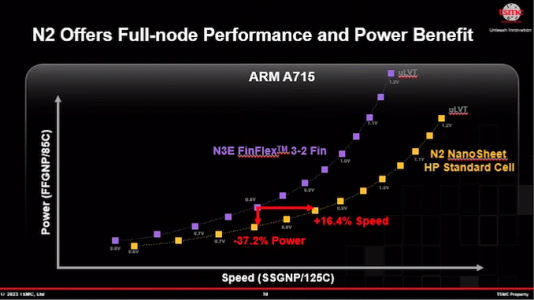DT parts always ride the tail end of the v/f curve aka they sit at Vmax for 1t.
dullard said: Just specifying Vmax gives us only half the picture.
No it gives you the whole picture since cores don't magically suck more Cac/Cdyn/whatever you call it because reasons.
Just for giggles, lets pretend your two posts are true and think about the Arrow Lake 285K.
That means, since Intel Arrow Lake 285K has a given Vmax, that the P core and E core use the same power and run at the same frequency (because, in this post we are pretending that Vmax gives you the whole picture "because of reasons"). This is quite a revelation. Every article, every review, and every post claims that the P core and E core in the 285K run at different frequencies. You have suddenly disproven everyone else!
This whole time, I thought the P cores were more power hungry than the E cores. This whole time, I thought the 285K P cores ran from 3.7 GHz to 5.7 GHz depending on the use. But no, they are always at the tail end of the V/F curve and only run at VMax, so the frequency is always the same. This whole time, I thought the P core turbo frequency was 5.7 GHz and the E core turbo frequency was 4.6 GHz. But no, since they are desktop cores, in 1T, the P core and E core must run at the same frequency (because, in this post we are pretending that Vmax gives you the whole picture and nothing else matters).
This is truly world-changing. Or you are wrong. I wonder which it is.



